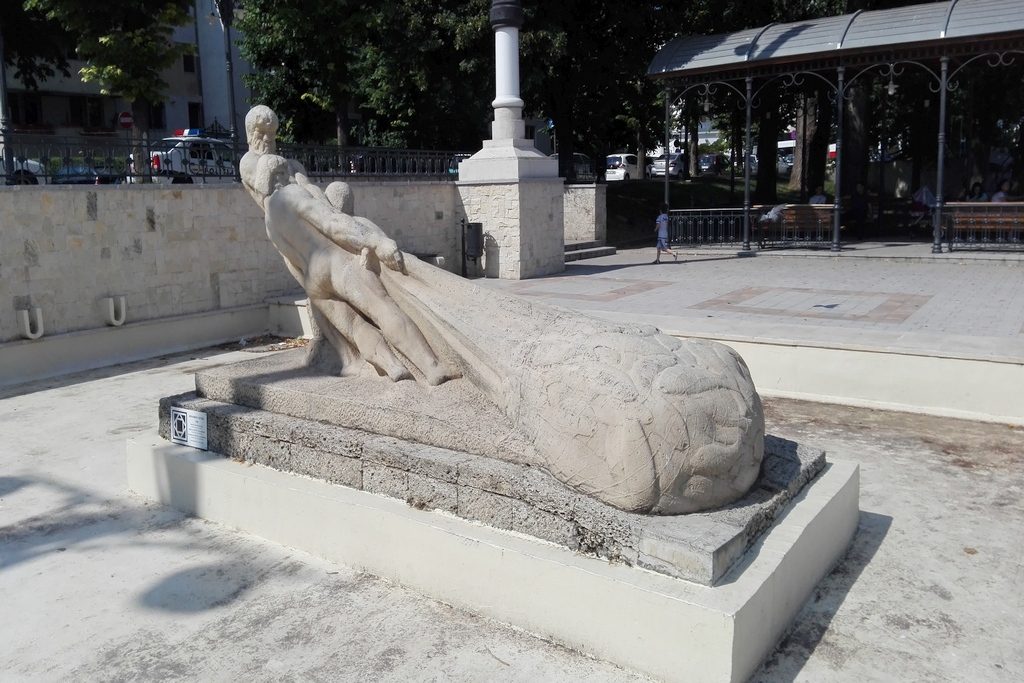

In the 60 authorities asked the sculptor Corneliu Medrea Virgil ( (1888-1964) an artist and a member of the Academy, the achievement of a group of statues to pay homage to the work of fishermen.
During the XIII century Marea cea mare – the Great Sea (as the Black Sea was called then) was dominated by Italian merchants from Genoa who helped develop the city. Later, Constanța has suffered a decline under the Ottoman rule and became a simple fishing village inhabited by Greeks and Tatars breeders of horses and sheep. As time passed, construction of the railway turned Constanta into a city, the city having a feature that is found in other ports like Russian ports, Ukrainian or Bulgarian: tourism boating and individual fishing (developed before the war, and today widespread in the rest of Europe).
The first fisheries law was imposed in 1896, founded by the great schola Grigore Antipa. This stage is characterized by modern approach to fisheries and fish farming, protection, ad rational exploitation of the fisheries, the establishment of research units, establishment of environmental education in the field – Fishery and Aquaculture School in Giurgiu (1928).
Originally, the fishing net fishermen statue was placed on the ground, later it is built around a pool that brings closer to reality the concept of statuary group.
was born in 1888 in the village of Miercurea Sibiu, in a family originally from Galda de Jos commune. After finishing the high school in Alba Iulia and School of Arts and Crafts in Zlatna, Medrea followed th School of Decorative Arts in Budapest (between 1909-1912), where he worked with sculptor György Zalaa.
Between 1912-1913 he traveled in various European countries, visiting museums of fine arts.
Since 1914 he participates in Bucharest Official Salons in exhibitions groups like “Tinerimea artistică“/ Artistic Youth, “Arta română“/ Romanian Art etc. He Exhibits at the Venice Biennale (in 1928, 1938, 1956 și 1958) andmany other artistic events abroad.
Between 1939 – 1964 he was a sculpture teacher at Academy of Fine Arts in Bucharest (the the Institute “Nicolae Grigorescu”).
In 1955 he was elected member of Romanian Academy. Cornel Medrea has practiced all genres of sculpture, cultivating full, robust forms, having as ideal, the simplicity of reality. The portrait, maternity series, historical evocations (Dragoș Vodă și Zimbrul), allegorical representations (Atlas, Pescarii, Victorie) converge towards the manifestation of a plenitude of an optimism based on an understanding of human image.
